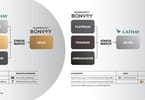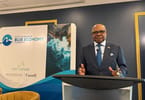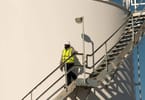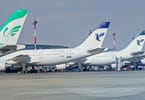AirAsia X has revolutionized air travel in many ways. The airline has the knack of understanding its customers’ pulse and continues to score when it comes to customer-service delivery. EyeforTravel spoke to Azran Osman-Rani, CEO of AirAsia X, about the airline’s business model and relevant issues.
For a group that describes itself as a passionate low-cost travel loyalist, AirAsia says it always listens to its guests’ needs for lower fares and fees.
Running an airline in today’s uncertain economic climate is a daunting task but AirAsia stands for its resilience.
AirAsia’s low-cost, long-haul affiliate, AirAsia X, continued its growth trajectory in the fourth quarter of 2011, carrying 0.64 million passengers, an increase of 7.3 percent over the same quarter in 2010, with the same aircraft fleet.
In all, the total number of passengers carried last year touched 2.5 million (up 31.5 percent from 1.9 million passengers in 2010), and it also recorded its highest ever full year load factor of 80.1 percent (up 3.6 percentage points from 2010).
AirAsia X was able to achieve positive load factor growth and average fare growth at the same time, on all of its routes that it has operated for at least a full year. With both load factor and average fares growing positively, the carrier was able to achieve a total revenue of RM1.9 billion in 2011, a 45 percent growth over 2010.
This performance, according to Azran Osman-Rani, CEO of AirAsia X, demonstrates the resilience of the low-cost, long-haul model, and underpins AirAsia X’s recently announced 2012 route network strategy to focus on building a stronger presence in its core markets.
The plan will see AirAsia X increase its flight frequencies on existing routes and look at expanding its network further across Asia Pacific.
In an interview with EyeforTravel.com’s Ritesh Gupta, Osman-Rani mentioned that the key to the success of AirAsia X lies in its business model:
– A strong globally-recognized brand that has received wide acceptance.
– An unrivaled regional network across Southeast Asia with the highest frequencies and connectivity from our Kuala Lumpur hub.
– World’s lowest unit cost and at the same time offer affordable fares.
– Disciplined execution to deliver world-class engineering reliability and on-time performance (88 percent in 2011) with new, spacious wide-body aircraft.
– Well-received customer service delivery, as evidenced by track record of winning Skytrax’s World’s Best Low-cost Airline for 3 consecutive years, and scores rated on Skytrax (www.airlinequality.com).
Adjustment
In January this year, the airline chose to re-align its network to focus on core markets. The airline decided to withdraw services to India (Mumbai and New Delhi) and Europe (Paris and London) from its Kuala Lumpur hub.
AirAsia X is to concentrate capacity in its core markets of Australasia, China, Taiwan, Japan, and Korea.
These changes will improve operating cost efficiencies and consolidate its network to focus on markets where it can build a leadership position in 2012, stated the airline. Osman-Rani said the airline intends to concentrate capacity in its core markets where it has built up stable, profitable routes within an infrastructure that supports low-cost services.
Commenting on how tough was it to ignore the demand and audience for its offering in these markets, Osman-Rani said the withdrawal of the services had nothing to do with ignoring demand.
“In fact, our decision was based on a careful assessment of the levels of supply and demand and the economic sustainability of these routes as a result of the levels of supply and demand. AirAsia X remains focused in maintaining its global leadership position in the low-cost, long-haul segment. The airline will concentrate capacity in our core markets of Australia, China, Taiwan, Japan, Korea, and Iran where we have built up stable, profitable routes. This move will see the airline opening up new routes within these markets, as well as add frequencies on existing routes. We have, since the withdrawal announcement, increased our flight frequencies to Tokyo and announced a new route to Sydney, Australia,” shared Osman-Rani, who is scheduled to speak at the forthcoming Travel Distribution Summit Asia 2012, to be held in Singapore (May 9 -10) this year.
Assessing some of the critical external factors including soaring taxes and higher jet fuel prices, Osman-Rani mentioned that while some jurisdictions have opted to increase taxes and make it more difficult for passengers to travel (e.g., visa restrictions), there are other jurisdictions that are more supportive and want to see increased connectivity, air travel, and tourism arrivals.
“We will prioritize markets that are pro-growth,” he said.
“As for jet fuel prices, we believe we have a sustainable competitive advantage with fuel consumption, burning less than 2.2 liters per seat per 100 km vs. other airlines burning about 4 liters. So, irrespective of the price of fuel, overall fuel cost per passenger is still lower. For example, our overall fuel cost per ASK is still 1.9 US cents, which is less than half that of other airlines,” added Osman-Rani.
Innovation
AirAsia Group isn’t averse to charging its customers for new services, but it ensures that there is some novelty factor associated with its offering.
For instance, this year AirAsia X and its technology partner, Optiontown, introduced a new service, called “Empty Seat Option (ESo),” available on Optiontown.com. AirAsia X says it is the first airline in Asia Pacific to offer its guests traveling in Economy, an option which provides a chance to get all three seats in a row for a nominal fee.
It seems the airline knows how to ensure that travelers pay for services that normally haven’t been charged for in the past.
“This is a revolutionary new service. In the past, customers could not book three seats in a row, for free or for a fee. The Empty Seat option is an added service to our ancillary product offerings, which adds extra value to our service offerings. We offer them the option to purchase only what is required depending on individual needs rather than bundling the cost to our fare offerings. This way, guests are able to enjoy continuous low fares from the airline,” said Osman-Rani.
This is AirAsia X’s second ancillary offering introduced in partnership with Optiontown after the success of its Upgrade Travel Option (UTo) service, launched last year.
The UTo provides AirAsia X’s guests the opportunity to upgrade to AirAsia X’s Premium Flatbed seats. The UTo has helped to significantly increase AirAsia X’s premium-class load factor (by over 22 percent) and upgrade yield (by over 60 percent), according to the airline. Options are limited by flight to ensure a reasonable probability of successful upgrades. Each option is dynamically priced.
The airline says it always listens to its guests’ needs for lower fares and fees. It could also mean eradicating certain fees and reducing the cost of traveling.
In December last year, AirAsia chose to abolish the counter check-in fees for all international flights throughout its route network. It decided not to charge the RM10 counter check-in fees. Prior to this, AirAsia also reduced the processing fee for the usage of charge cards during flight booking from RM8 per guest per sector to only RM5 per guest per sector.
Osman-Rani said the airline’s distribution model is still overwhelmingly via online direct-to-consumer channels, at over 90 percent of sales.
It is believed that bundling products to provide better value will be an important part of pricing strategy going forward. Some say this is more a function of the way pricing is presented and displayed. Also, the travel industry should focus on quality and differentiation so that price does not become the only factor in purchasing a holiday.
Osman-Rani says travel suppliers must ensure their technology capabilities are kept abreast to enable ala-carte unbundling. This is a trend that will keep continuing, he concluded.
WHAT TO TAKE AWAY FROM THIS ARTICLE:
- “In fact, our decision was based on a careful assessment of the levels of supply and demand and the economic sustainability of these routes as a result of the levels of supply and demand.
- This performance, according to Azran Osman-Rani, CEO of AirAsia X, demonstrates the resilience of the low-cost, long-haul model, and underpins AirAsia X's recently announced 2012 route network strategy to focus on building a stronger presence in its core markets.
- We have, since the withdrawal announcement, increased our flight frequencies to Tokyo and announced a new route to Sydney, Australia,” shared Osman-Rani, who is scheduled to speak at the forthcoming Travel Distribution Summit Asia 2012, to be held in Singapore (May 9 -10) this year.






















